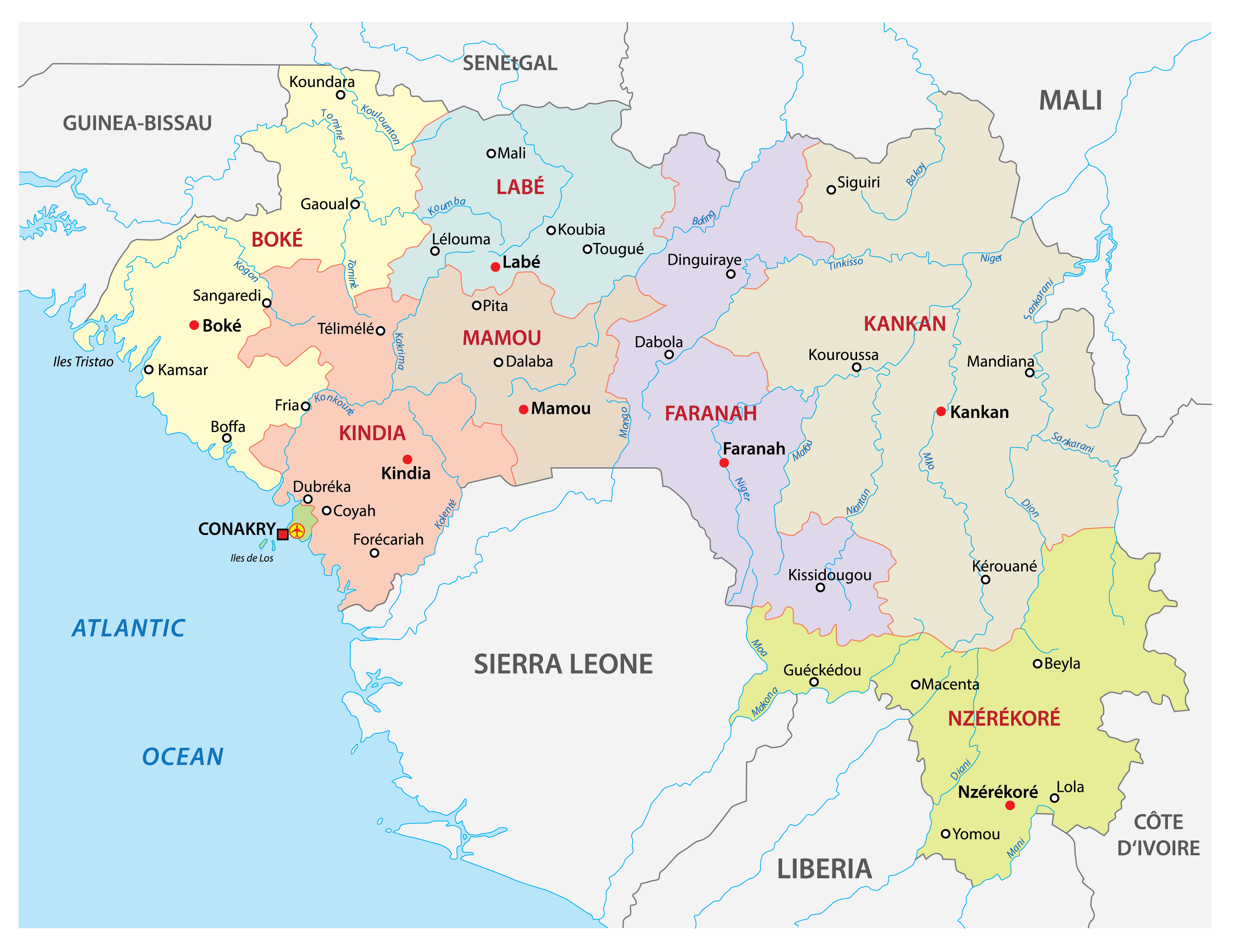Regions and Cities of Guinea
Discover the geographical and cultural diversity of the eight administrative regions of the Republic of Guinea
Guinea, officially the Republic of Guinea, is divided into eight administrative regions including the capital Conakry as a special zone. Each region has its own landscape, people, and economic strengths—from coastal mining areas to the forest highlands of the southeast. This section helps visitors explore Guinea's regions, major cities, and what makes each area unique.
Administrative Map of Guinea

Map of Guinea's eight administrative regions with their capitals
The Eight Regions

Boké Region
Capital: Boké
Located in western Guinea along the Atlantic coast, Boké is rich in bauxite and plays a vital role in mining and port activities. Major towns: Kamsar and Sangarédi.

Kindia Region
Capital: Kindia
Known for fruit production and banana exports, Kindia is an agricultural heartland close to Conakry. Towns: Forécariah, Télimélé.

Labé Region
Capital: Labé
In the Fouta Djallon highlands, Labé features scenic mountains and is the cultural center of the Fulani (Peulh) people.

Mamou Region
Capital: Mamou
Strategically located in central Guinea, Mamou links the north, south, and coastal areas — known as the "crossroads of Guinea."

Faranah Region
Capital: Faranah
Situated on the Niger River, Faranah has strong agricultural potential and mineral reserves. It's the birthplace of Ahmed Sékou Touré.

Kankan Region
Capital: Kankan
Guinea's largest region, rich in gold and cotton, Kankan is also home to Université de Kankan.

Nzérékoré Region
Capital: Nzérékoré
Located in the forested southeast, this region produces coffee, cocoa, and palm oil. Major towns: Guéckédou, Lola.

Conakry (Special Zone)
Capital: Conakry
The capital city, Conakry, is Guinea's economic and political center — a busy port and the nation's main gateway to the world.
Major Cities
| City | Region | Description |
|---|---|---|
| Conakry | Conakry Region | Capital city and main port, cultural and economic hub. |
| Kankan | Kankan Region | Historical trading city and educational center. |
| Nzérékoré | Nzérékoré Region | Largest forest-zone city, known for agriculture and trade. |
| Labé | Labé Region | Cultural capital of the Fouta Djallon. |
| Kindia | Kindia Region | Major fruit-growing and agricultural center. |
| Boké | Boké Region | Mining and industrial hub for bauxite. |
| Mamou | Mamou Region | Strategic crossroads city in central Guinea. |
| Faranah | Faranah Region | Agricultural base and historical significance. |
Geographic Diversity
Atlantic Coast
320 km of coastline
Mountains
Fouta Djallon (1515m)
Savannas
Upper Guinea
Forests
Forest Guinea
Plan Your Visit
Discover the wonders of each Guinean region and explore the diversity of our beautiful country